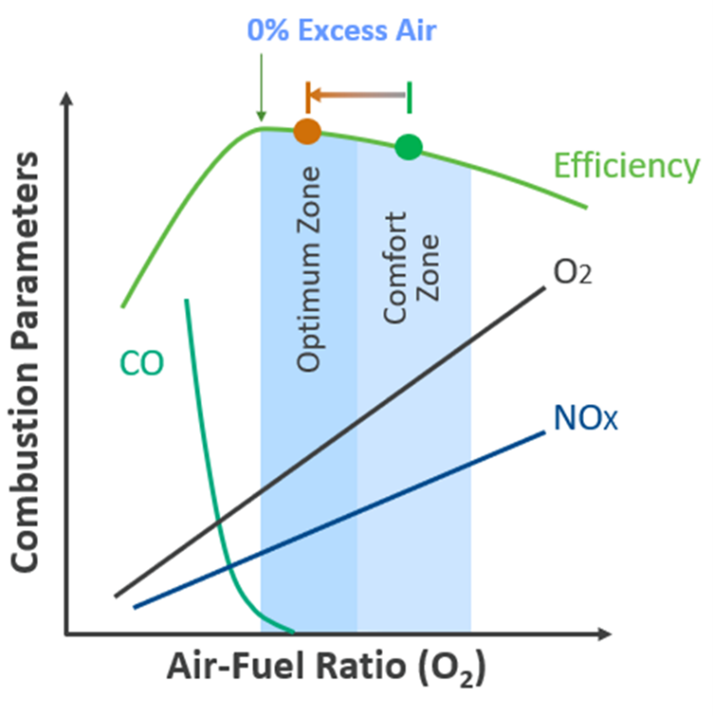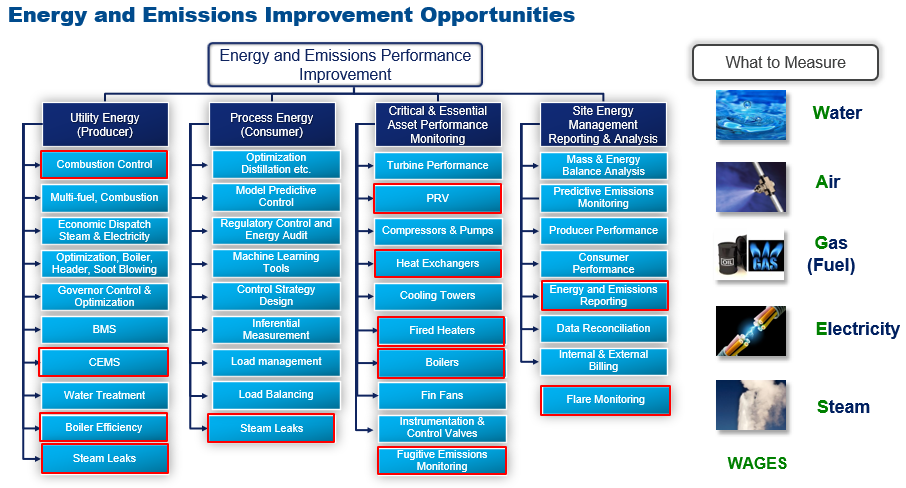At the EHS (Environmental, Health & Safety) Seminar, Emerson’s Michael Machuca presented Digital Solutions to Achieve Your Sustainability and Decarbonization Goals. This conference focuses on companies within the petrochemical industry.
Michael opened his presentation by citing that 37% of U.S. manufacturing energy consumption is by the chemical industry. In an analysis by Worley, opportunities to drive more sustainable operations are available in four major areas—alternative feedstocks, process decarbonization, resource stewardship, and digital transformation.
Nearly all chemical producers have targets to reduce carbon-based emissions and energy intensity. There is a direct relationship between energy intensity and emissions. The International Energy Agency (IEA) notes that to meet the 2030 targets, the chemical industry needs to drive a 12% improvement in energy intensity.
According to the Energy Star Guide for Energy Management and Plant Managers, 30% to 50% of an operating budget is typically spent on energy. This means that any improvement in energy efficiency will impact not only how you manage your operations from a cost perspective but also from a corporate sustainability one.
Michael shared this chart on areas for improvement opportunities.
Fired heater equipment such as boilers and furnaces have common operating challenges, including:
- Being one of the largest consumers of energy
- Maintaining operating expertise and manual control intervention skills
- Absence of automation in natural draft air supply, fuel quality variation mitigation, and unreliable analyzer measurements around the combustion process
- Use of high levels of excess air can increase emissions drastically, such as a 2% O2 increase causing a 25-30% NOx increase
- Maintaining enough excess air to ensure complete burning of fuel and to maintain a safety margin
- Meeting continuously more stringent greenhouse gas emissions regulations.
 Critical measurements optimizing fired heaters and boiler energy and emissions performance included fuel flow and BTU content, airflow, excess oxygen, overall emissions monitoring, and flame stability detection. An optimal combustion control strategy requires fuel BTU compensation in real time as the BTU content in the fuel changes.
Critical measurements optimizing fired heaters and boiler energy and emissions performance included fuel flow and BTU content, airflow, excess oxygen, overall emissions monitoring, and flame stability detection. An optimal combustion control strategy requires fuel BTU compensation in real time as the BTU content in the fuel changes.
Michael recommended using Coriolis flowmeters for mass-based fuel gas control to stabilize control and operate more efficiently. The switch from volumetric to mass-based flow measurement for combustion control can yield a $250K net present value savings per heater.
Gas chromatographs can provide feed, fuel gas, and effluent composition to improve combustion efficiency. The analysis results can help stabilize burner operation and enable feedforward control to compensate for variations in feed gas composition.
Oxygen analyzers and oxygen and combustibles transmitters accurately measure excess oxygen and CO in the flue gas to improve energy efficiency by maintaining target oxygen levels with feedback control in the stack. Here is a case study where a power producer optimized excess fuel air for considerable energy savings.
From a regulatory compliance standpoint, Continuous Emissions Monitoring Systems help to comply with regulations and simplify project execution.
Important measurements for optimizing steam systems include multivariable transmitters to improve steam density calculations, acoustically monitoring steam traps for stuck openings or closings, and pressure relief valve monitoring. Wireless pressure, temperature, flow, corrosion, and acoustic steam trap leak detection solutions help to monitor steam use and minimize energy losses.
Boiler feedwater quality is another lever to improve energy consumption. Conductivity and pH sensors can be used in control strategies to control the boiler water chemistry and identify heat exchanger leaks.
Mass steam measurement can improve overall energy balance. Temperature and pressure compensation in differential pressure meters and vortex flowmeters provide accurate steam mass flow measurements.
Michael’s final recommendations included steam leakage detection through pressure relief valves and steam traps, boiler drum guided wave radar level measurement and control, reducing permanent pressure loss (PPL) in steam headers, and using operational analytics to monitor heat exchanger fouling and duty.
Follow the links above for more on these technologies to help you drive more energy-efficient and sustainable operations.






